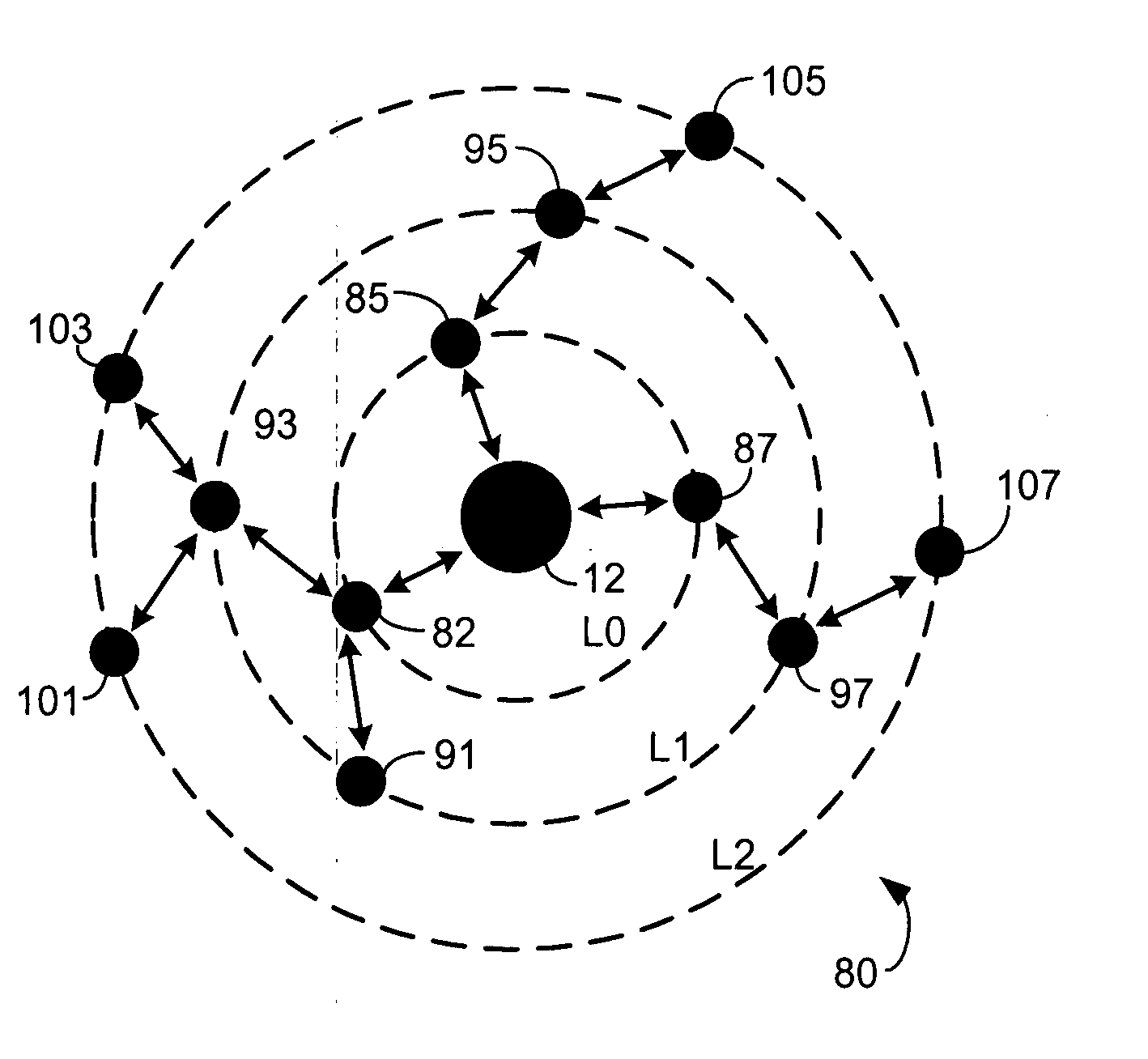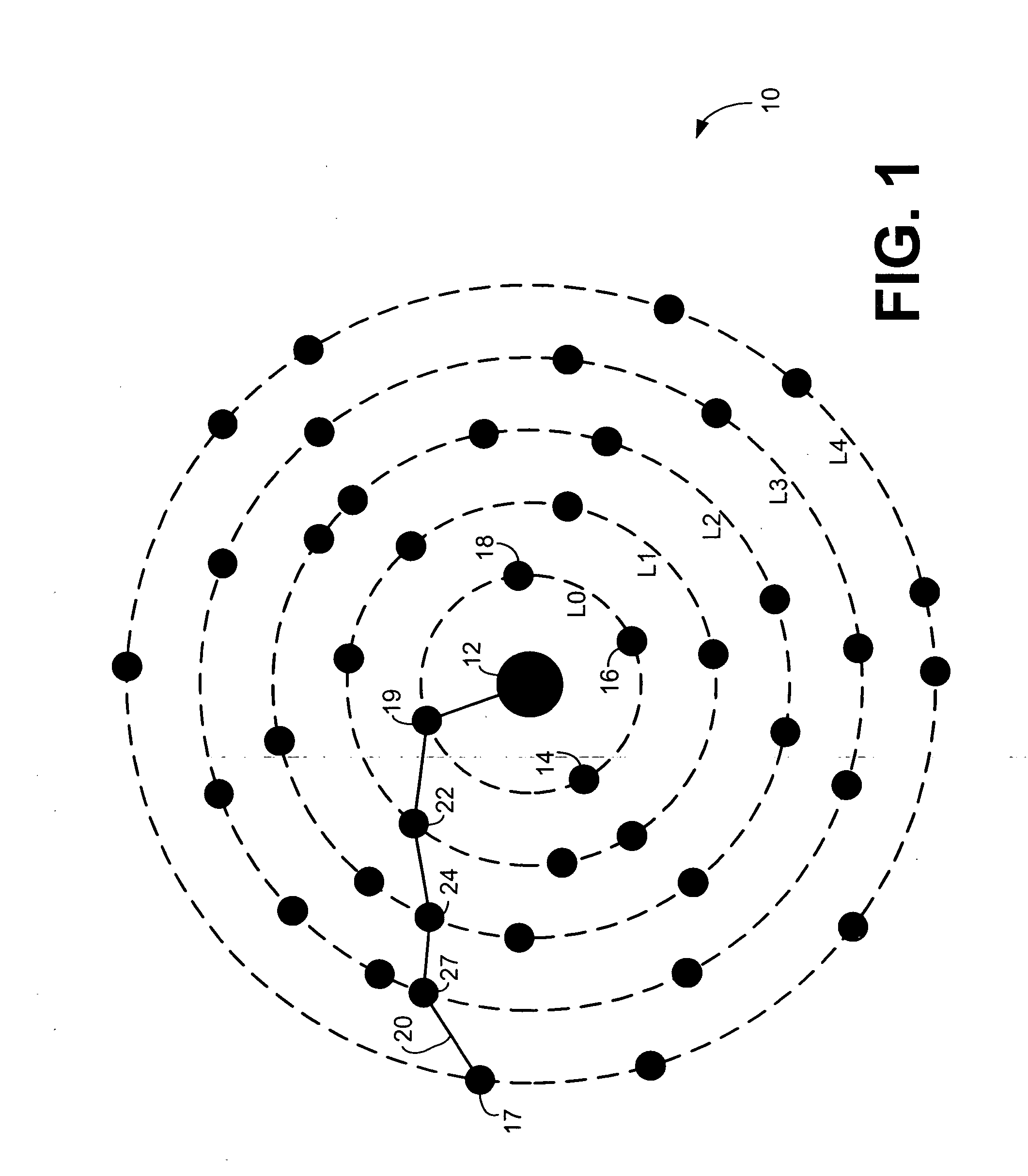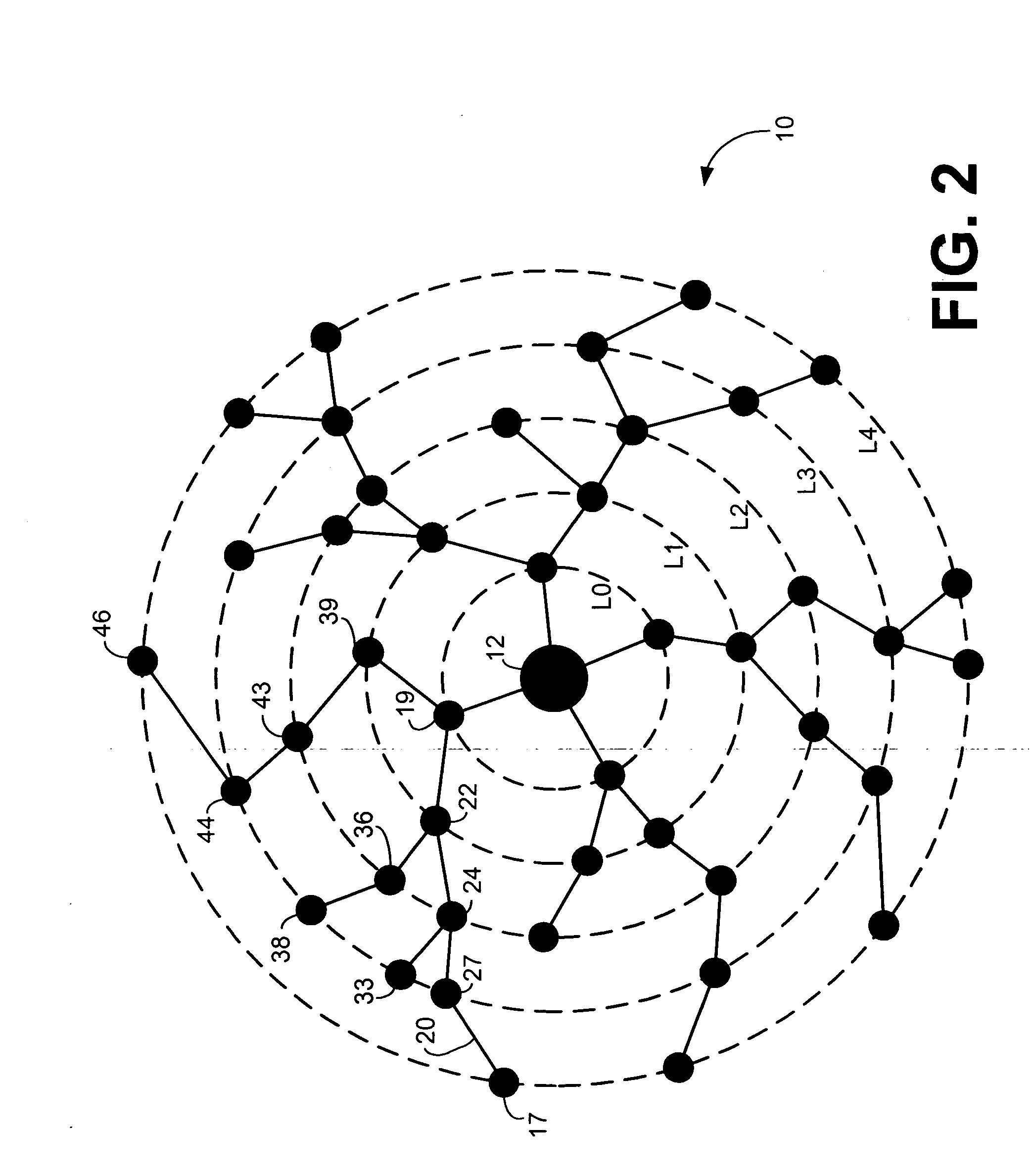System and method for a wireless mesh network
a wireless mesh network and wireless technology, applied in the field of wireless communication, can solve the problems of inability to exercise control over a system, inability to detect a condition at a remotely located position or in a remote location, and inability to monitor and control devices in areas where remote sensors and controllers are positioned miles away from the central control area instead of feet,
- Summary
- Abstract
- Description
- Claims
- Application Information
AI Technical Summary
Problems solved by technology
Method used
Image
Examples
Embodiment Construction
[0033] In addition to the drawings discussed above, this description describes one or more embodiments as illustrated in the above-referenced drawings. However, there is no intent to limit this disclosure to a single embodiment or embodiments that are disclosed herein. On the contrary, the intent is to cover all alternatives, modifications, and equivalents included within the spirit and scope of this disclosure and as defined by the appended claims.
[0034] A system for an access node coupled to a computer to wirelessly communicate with a plurality of disparately located radio nodes each coupled to a meter or other sensor is provided. The radio nodes within the communication range of the access node orient onto a first logical layer to directly communicate with the access node. Additional radio nodes beyond the communication range of the access node indirectly communicate with the access node by detecting communications from radio nodes on lower logical layers that are closer to the ...
PUM
 Login to View More
Login to View More Abstract
Description
Claims
Application Information
 Login to View More
Login to View More - R&D
- Intellectual Property
- Life Sciences
- Materials
- Tech Scout
- Unparalleled Data Quality
- Higher Quality Content
- 60% Fewer Hallucinations
Browse by: Latest US Patents, China's latest patents, Technical Efficacy Thesaurus, Application Domain, Technology Topic, Popular Technical Reports.
© 2025 PatSnap. All rights reserved.Legal|Privacy policy|Modern Slavery Act Transparency Statement|Sitemap|About US| Contact US: help@patsnap.com



